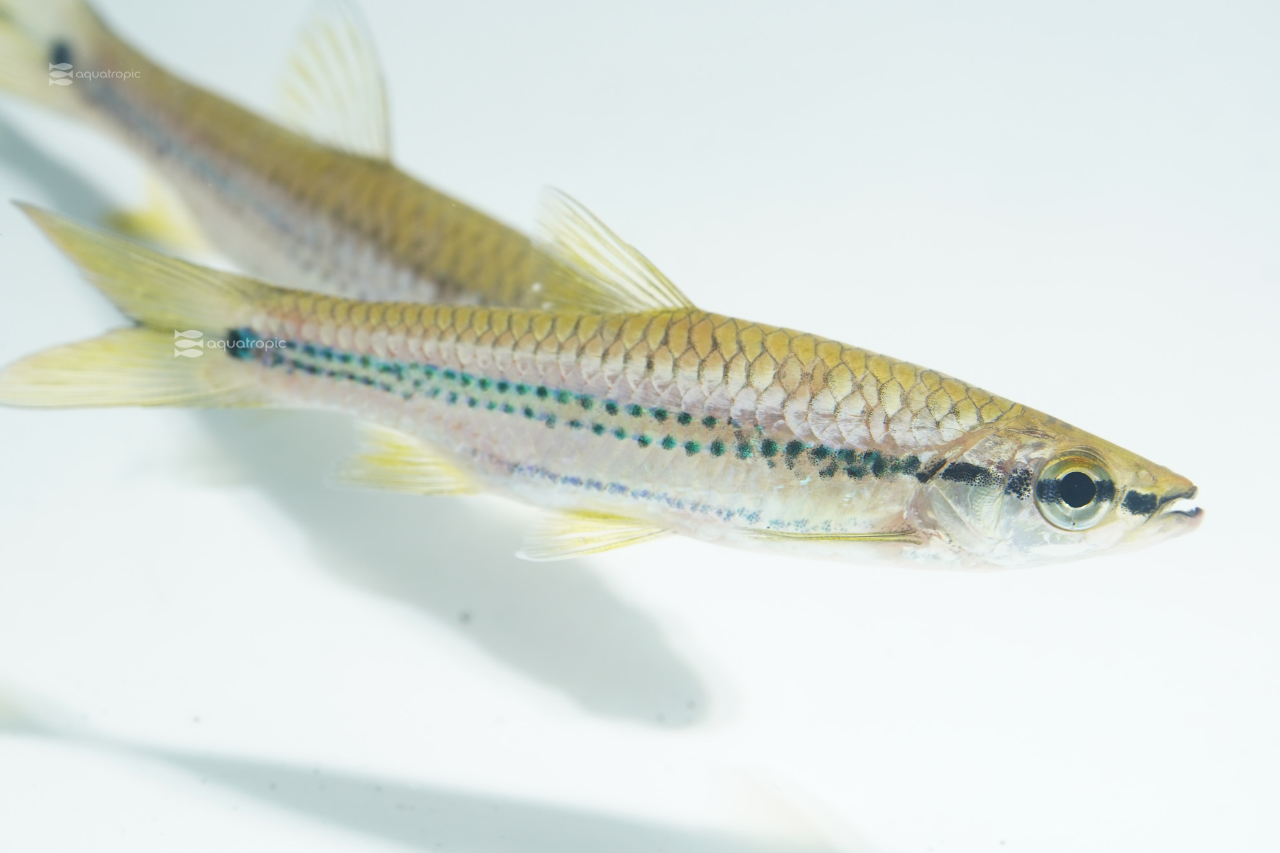How Many Apollo Sharks Are There Anyway?

There are several different fish that are imported and sold as “Apollo Sharks,” and to add to this confusion, this name is appropriately applied to more than one fish! One of these, Luciosoma setigerum is also commonly called the Apollo Sharkminnow, a name it shares with at least one other fish, Luciosoma spilopleura. Luckily, both these fish have similar husbandry requirements, share a maximum size, and behave in a similar manner in captivity. They are both great aquarium fish, though today we'll focus on L. setigerum. If you are very serious about only getting one or the other, this is one fish you will definitely want to identify using the binomial nomenclature (scientific name).
Many of the other fish sold as Apollo Sharks are also in the Luciosoma genus, though the vast majority of these fish will get much larger than L. setigerum, making this (and L. spilopleura) the best candidate(s) for hobby level captive aquatics.

The Apollo Shark is an active, hardy fish that takes to captivity well. They are opportunistic carnivores in the wild and while they will eat invertebrates, assays of stomach contents indicate that at least as adults, what L. setigerum eats most is mostly other fish. That being said, they are easily taught to eat floating pellets. Some pickier individual fish may need to be coaxed into eating processed foods by offering small feeder fish or live worms to get them started eating in captivity, but we've not found this to be much of an issue. They will also relish appropriately sized thawed foods like mysis and chopped prawn, both available from Gamma Foods. These Sharks live close to the surface of the water and as such, shouldn't be feed sinking pellets as they will generally avoid hunting for food beneath them in the water column. As a result, aquarists shouldn't feed them too much at one time, unless you are trying to get some food down past them to other tank mates. Here at Aquatropic, they are on a once-a-day feeding schedule and they perform well for us when fed this way.
In regard to water quality, they like clean, and especially well oxygenated water. This environment best mimics the streams they are collected from. As a result, your display should run oversized filters; having filters overturn the full volume of the display five to ten times an hour will be adequate. While they will appreciate more flow than this, it isn't really necessary as long as the dissolved oxygen levels stay high and to that end, we recommend forcing air into the tank with an air pump. Luciosoma setigerum appreciates temperatures in the low to mid 70s, and a pH within a point of 7. They are adaptable to most hardness levels but will do best in moderate to hard water.
The largest Apollo Shark of this species on record is a hair over ten inches long, and a much more common adult size is in the seven-to-eight-inch range. Even so, aquarists should plan for a 110-gallon aquarium or better for the long term grow out of these fish. The focus of the tank should be on length, and not depth as they will generally stay near the surface of the aquarium. The rivers and deltas where they are found in the wild usually have a good amount of leaf litter and driftwood in them. This can be emulated in the home display but try to emphasize open swimming space when planning the upper reaches of your décor. A tight-fitting lid is a requirement for everyone who wants to keep the Apollo sharks off their floor. They are incredibly fast swimmers and if startled are likely to jump a long way! They will pose no risk to plants if added to a planted aquarium, however few plants will thrive in the higher flow environment that L. setigerum prefers.
Apollo Sharks are social fish and will do best in groups of six or more; and this is one of the reasons we suggest aquarists choose tanks that are at least six feet long; to help accommodate this many fish at their full size. Keeping less fish than this is possible, but they can be aggressive if kept in smaller numbers or singly. Very small fish like neon tetras will get eaten by Apollo Sharks and fish that are plodding swimmers or slow eaters may struggle to get enough food if they are chosen as tank mates. Good choices for other fish to share and aquarium with Luciosoma setigerum are fish like Barbs, Loaches, Knifefish, and Acaras. As a fish that lives near the top of the water column, they are usually fine with bottom dwelling fish like Eartheaters and Armored Catfish as well.
Luciosoma setigerum is found all across the Malay Peninsula and Indonesia. As of writing this, they have not been aquacultured yet; all of the specimens seen available for aquarium keepers are wild caught. For those of you expert aquarists and hobby fish breeders, here is an unparalleled challenge as a yet-unaccomplished feat. The fish's high activity level, hardiness and good looks make them appropriate for just about everyone else too! If you're looking for an amazing group of large, but not massive, fish for your display, then a small group of Apollo Sharks might be just what you are looking for. Head to your LFS and ask for six of them from Aquatropic today!